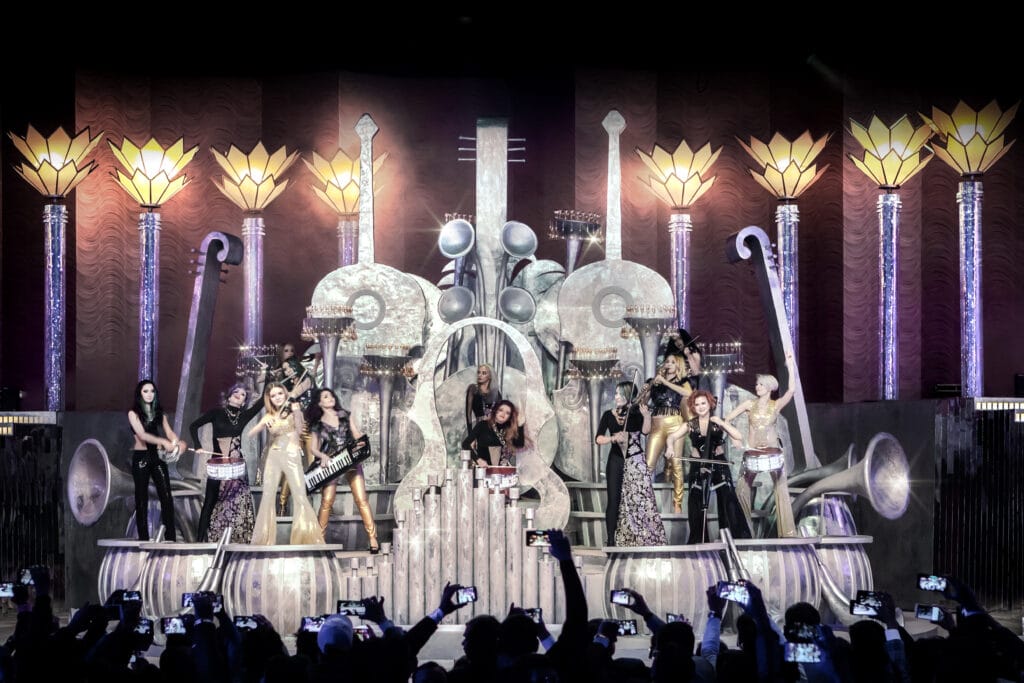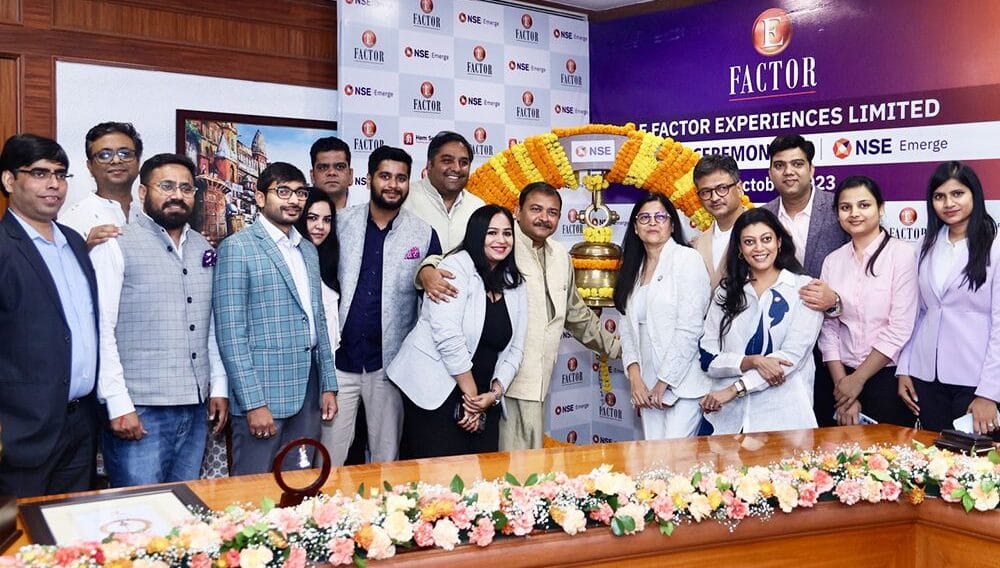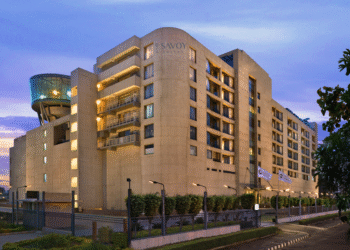In this insightful conversation with the veteran Samit Garg, Co-Founder, E-Factor Experiences Limited, we explore the transformation of India’s wedding industry—from its growth into a structured sector to emerging trends, ethical challenges, and the Wed in India initiative.

My Journey into the Industry
I hail from the beautiful city of Lucknow, where I spent my early years deeply involved in extracurricular activities. However, as life often takes unexpected turns, so did mine. Under the persistent guidance of my father, I moved to Delhi, where he believed I would find a larger canvas to paint my aspirations and greater opportunities to explore.
My foray into the events industry began somewhat unexpectedly. My cousin was running a prominent infrastructure company called Delhi Tents at the time, and while I wasn’t particularly enthusiastic about it in the beginning, I gradually started understanding the industry. From infrastructure and corporate events, I found my way into weddings—an entirely different and fascinating world and from here was born E-Factor.
The defining moment came when we had the opportunity to organize the wedding of Peter Punj and Sonali Nanda. To this day, it remains one of the most talked-about weddings in Delhi’s elite social circles. Sonali’s father, Suresh Nanda, had a non-traditional approach—unlike the typical Indian mindset, he believed in entrusting the entire responsibility of the event to a single entity. This was a rarity back then, but it set the foundation for what would become a turning point in wedding management.

Our first large-scale wedding management project took place in 2002–2003, featuring multiple performances, renowned designers, and an intricate level of coordination. By the end of it, we realized that the Indian wedding industry needed a structured, professional approach—one that streamlined execution and introduced the concept of wedding management as a serious business.
Back in 2004–2005, profit margins in the industry were slim, primarily because professional expertise wasn’t recognised or valued. I strongly believed that intellectual capital, logistics expertise, and human effort deserved financial acknowledgment. That’s when we introduced the concept of a management fee for wedding planning—an unprecedented move at the time. The first-ever management fee we charged was ₹5,00,000, marking a pivotal shift in the industry’s perception of professional wedding planning.
Gradually, people started recognizing the value of structured event management, and the respect for our profession grew. What started as a passion for organizing and orchestrating events transformed into a revolution in the Indian wedding industry—one where professionalism, expertise, and strategic planning became indispensable.
Not a Wedding Planning Company but a Wedding Management one
There is a clear distinction between a wedding planner and a full-fledged wedding management company. Wedding planning is just one small aspect of the entire process—it can often be handled by a single individual with a laptop and a briefcase. In contrast, wedding management is far more comprehensive. It is solution-driven, experience-based, and involves end-to-end execution.
At E-Factor, we don’t just plan weddings; we manage every intricate detail to create seamless and memorable experiences. Today, we are a large team of approximately 70 professionals, each bringing expertise and innovation to the table. Over the years, we have had the privilege of leaving our mark on the global wedding industry, having successfully executed weddings in more than 20 countries. Our journey has been nothing short of extraordinary, and we continue to push the boundaries of excellence in wedding management.

The Evolution of the Wedding Industry
The fact that you refer to it as an ‘industry’ speaks volumes about how far we have come. That, in itself, is one of the biggest accomplishments. Today, whether in the organised or unorganised sector, educated or uneducated circles, everyone recognizes weddings as a full-fledged, large-scale industry—an ecosystem of its own. What’s even more significant is that it’s not just financial institutions or media professionals acknowledging this shift; even the government has begun to view and discuss weddings as a serious economic sector.
Another major transformation has been in the mindset of people. Every small detail matters today—it’s no longer just about the aesthetics of the venue or the grandeur of the menu. It extends to the way invitations are designed, the guest experience from arrival to departure, and most importantly, the lasting memories created. Customization has reached an entirely new level. A wedding is no longer just an event; it is a reflection of the family’s values, traditions, and ethos, all seamlessly woven into the celebrations through gestures, hospitality, and communication.
That said, as an industry, we cannot take full credit for this evolution. The transformation has been a collaborative effort—50% of the credit belongs to the hosts, the families who dream big and aspire to make their weddings extraordinary.
Over the years, what has truly changed is the way people perceive weddings. The scale has expanded, the definition of entertainment and experiences has evolved, and the level of personalisation has reached new heights. Aspirations have grown, spending capacity has increased, and infrastructure and resource availability have significantly improved. Exposure and knowledge have also advanced, shaping the industry in unprecedented ways.
People have become more progressive, and as a result, the wedding landscape has transformed.
Discipline, Respect, and Collective Growth: The pillars of a Sustainable Wedding Industry
When we talk about organizing the wedding industry at a larger scale, several factors come into play. The most crucial among them is discipline. For any industry to function professionally and gain recognition, it must operate with a strong foundation of discipline—not just in terms of mannerisms, but in conduct and ethical practices.
One pressing issue in the industry today is intellectual property rights. Many people copy designs from Google or Pinterest without crediting the original creators. While clients often recognize this, they, too, fail to acknowledge the source. Ethically, this is unacceptable. Similarly, the ongoing debate on music licensing is another area where discipline is needed. If we use someone’s song, we must give them due credit. The same applies to designer fashion—outright copying and replication are unethical and should be discouraged. The industry must shift its mindset and move away from shortcuts to build a more sustainable future.
Another critical aspect that will define the industry’s long-term growth is respect. Respect is fundamental—not just for intellectual capital but for human lives and dignity. In India, the value of human life is often overlooked, particularly in industries like ours. The country has seen exponential growth over the last decade, but true progress cannot happen without ensuring the well-being of the people who form the backbone of this industry.
From carpenters to tent workers, many labourers lack basic facilities like proper health and safety measures or even something as essential as a clean restroom. This is both inhumane and unacceptable. Respect for every individual—regardless of their role—is essential for sustainable industry growth. Respect for people, respect for intellectual property, respect for time—these are the pillars on which the future of the industry must rest.
Lastly, collective growth is crucial. Individual success is one thing, but true progress lies in contributing to the larger ecosystem—uplifting society, fostering leadership, and driving meaningful change. The industry must grow as a whole, ensuring that its evolution benefits not just a select few but everyone involved.
Wed in India
Around two years ago, during my tenure as President of EEMA, I collaborated with Deloitte to develop a strategic roadmap for promoting wedding tourism in India. This initiative coincided with the G20 Summit, and I had the opportunity to present our draft strategy document to the then Tourism Minister, Mr. Kishan Reddy, during the summit in Siliguri. Over dinner, we discussed the concept, and he was highly impressed.
A week later, I received a call from his office informing me that key excerpts from our document had been shared with the Prime Minister’s Office (PMO). Soon after, in his Mann Ki Baat address, the Prime Minister publicly acknowledged the concept of “Wed in India” and highlighted the importance and economic contribution of this sector. This recognition was a significant milestone, as the initiative had originated from our efforts.
The primary objective of the Wed in India campaign was to position India as a premier global wedding destination and attract international weddings. However, the current focus of the government seems to have shifted more towards discouraging outbound weddings rather than actively promoting inbound wedding tourism. While retaining Indian weddings within the country is beneficial, the true success of this campaign lies in inviting people from across the world to celebrate their weddings in India.
India is an exceptional wedding destination—cost-effective, rich in culture, and offering world-class hospitality. Moreover, wedding tourism has the potential to drive infrastructure development across the country. Nearly 25 destinations have been identified as potential wedding hubs, yet the options for destination weddings remain largely confined to Rajasthan and Goa. Expanding this landscape and truly embracing the Wed in India vision will unlock immense economic and cultural opportunities for the country.







